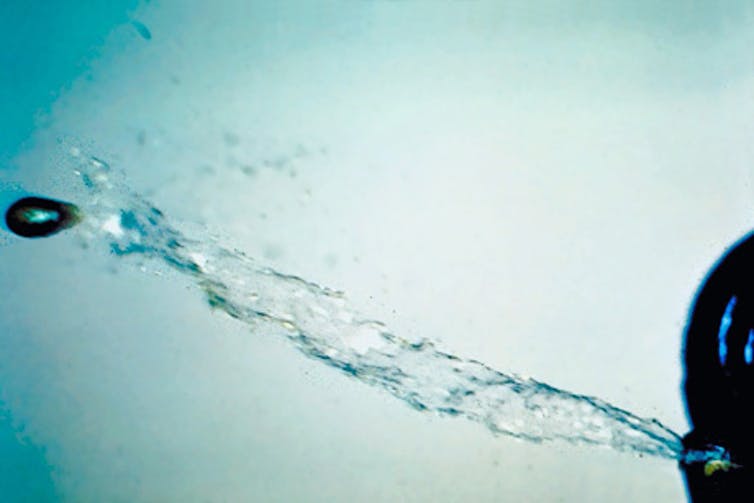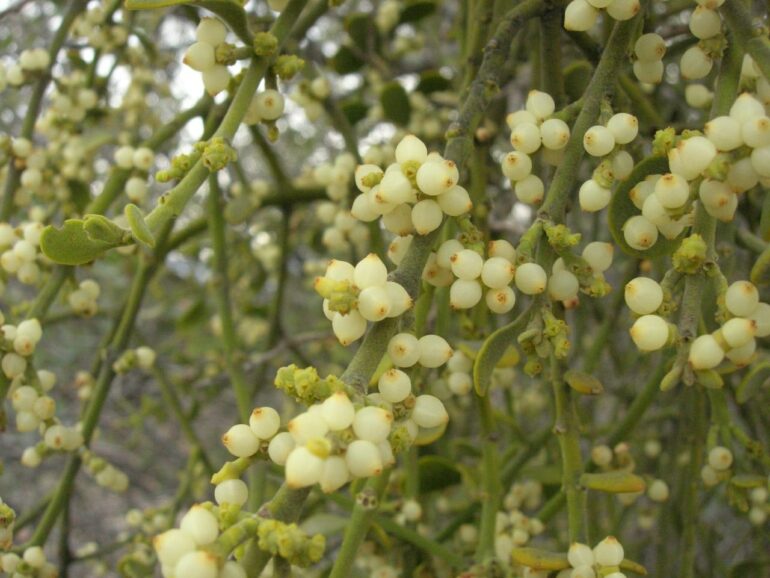A parasitic plant with potentially poisonous berries might not sound like something that would boost your Christmas decorations to the next level. But, botanically speaking, that’s what mistletoe is.
There are some 1,300 species of this evergreen plant worldwide. They’re all parasitic or semiparasitic, meaning they can survive only on a host plant. Rather than being rooted in the ground, they live on the branches of other trees and shrubs.
Just two types are native to North America. Twelve species of the American mistletoe can be found distributed largely across the southern half of the U.S., mostly affecting deciduous trees in the East as well as some evergreens in the West. Sixteen species of the leafless dwarf mistletoe infect only trees in the pine family and are mostly found along the West Coast.
The American mistletoe, the one used at Christmas in the U.S., is in the genus Phoradendron, which means “thief of the tree” in Greek. It has green leaves and is capable of photosynthesis and so produces much of its own food. But American mistletoe also sucks water and other nutrients out of its host plant by sending rootlike structures called haustoria into the vascular tissue just under the bark of branches and twigs. These invading structures can live for many years inside a tree even if the mistletoe plant itself is removed.
Mistletoes are what botanists call dioecious, meaning these plants have separate male and female versions. The females produce the fruits, called berries, which are generally white, but can be pink or reddish depending on the species. Birds widely distribute the seeds after eating the berries. Seeds of some species can also be shot out of the fruit like a cannonball at up to 60 mph (100 kph) to a distance as far as 50 feet (15 meters). A sticky substance on the seeds helps them attach to any tree they land on until they germinate and begin to grow.

Water pressure builds inside a dwarf mistletoe berry as it ripens. When the berry bursts, the explosion potentially propels the sticky seed to a new home.
Frank Hawksworth, U.S. Forest Service, USDA, CC BY
In general, mistletoe won’t kill a tree unless it is heavily infested. Even then the tree doesn’t usually die from the mistletoe; most often death is an indirect effect of attacks from diseases or insects that take advantage of the stressed tree. Mistletoe’s parasitic ways can cause significant economic damage to forests industrially harvested for lumber.
For a homeowner, though, it’s usually not necessary to control mistletoe – which is good, since getting rid of it can be difficult and takes patience and persistence. You can prune it out, being sure to get all those spreading haustoria under the host’s bark, or try chemical controls like the plant growth regulator ethephon.




